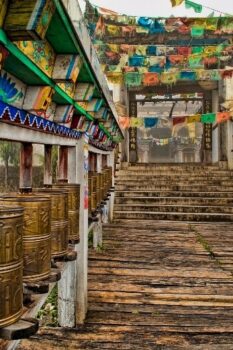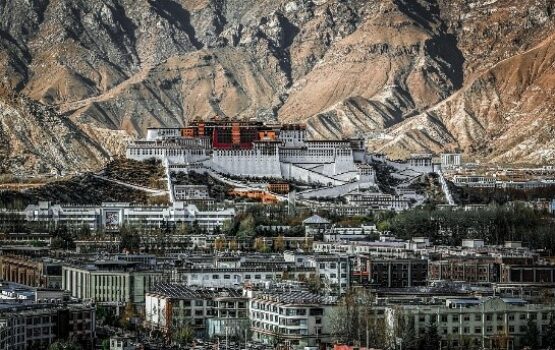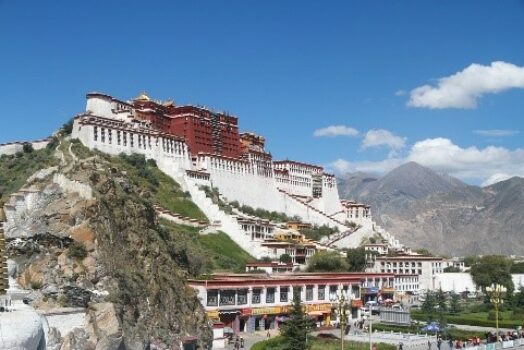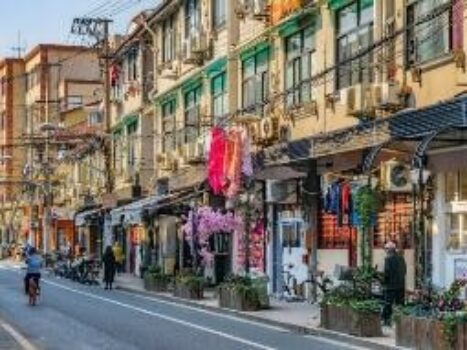- Global DMC Network
- Our DMC Partners
-
Travel Inspiration
-
Themed Travels
- Noctourism: Adventures after dark
- Community Based Toursim – Travel and Give Back
- Loved by Locals – Discover places off the beaten track
- Women Only Wandering – Ladies on Tour
- Longevity
- Blockbuster Destinations
- Taste & Travel – Culinary Delights
- New Mobility
- Mindful Journeys
- Cosy Boutique
- Slow Travel
- Wander Wild
- Cool-Cationing
- Buzzling Metropolis
- Endless Luxury
- Highlight-Destinations Up Close
-
Themed Travels
- Work with the DMC Network
- Contact
- Global DMC Network
- Our DMC Partners
-
Travel Inspiration
-
Themed Travels
- Noctourism: Adventures after dark
- Community Based Toursim – Travel and Give Back
- Loved by Locals – Discover places off the beaten track
- Women Only Wandering – Ladies on Tour
- Longevity
- Blockbuster Destinations
- Taste & Travel – Culinary Delights
- New Mobility
- Mindful Journeys
- Cosy Boutique
- Slow Travel
- Wander Wild
- Cool-Cationing
- Buzzling Metropolis
- Endless Luxury
- Highlight-Destinations Up Close
-
Themed Travels
- Work with the DMC Network
- Contact
- Global DMC Network
- Our DMC Partners
-
Travel Inspiration
-
Themed Travels
- Noctourism: Adventures after dark
- Community Based Toursim – Travel and Give Back
- Loved by Locals – Discover places off the beaten track
- Women Only Wandering – Ladies on Tour
- Longevity
- Blockbuster Destinations
- Taste & Travel – Culinary Delights
- New Mobility
- Mindful Journeys
- Cosy Boutique
- Slow Travel
- Wander Wild
- Cool-Cationing
- Buzzling Metropolis
- Endless Luxury
- Highlight-Destinations Up Close
-
Themed Travels
- Work with the DMC Network
- Contact
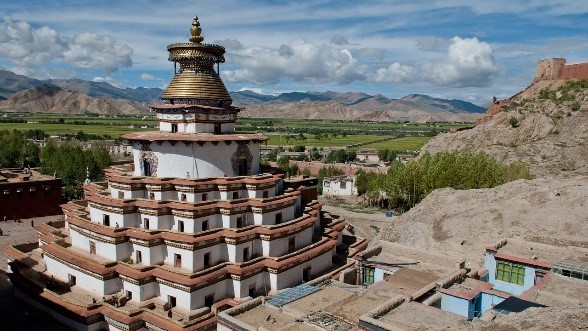

Explore China's Cultural Riches
11 Days
Sneak peek of a few highlights
Lhasa
Discover Lhasa, the spiritual heart of Tibet. Explore ancient monasteries, immerse in rich culture and find inner peace in the Himalayan foothills.
Tibet
Embark on a soul-stirring journey to Tibet, the Roof of the World. Marvel at snow-capped peaks, ancient monasteries and the serene beauty of the Himalayas. Experience spiritual enlightenment, vibrant traditions and the warm hospitality of Tibetan culture.
Shanghai
Be transported back to the decadent days of 1930s Shanghai with a walk through the French Concession. Explore the Lilongs - the old alleyways, and stroll through the exquisite Yu Yuan Gardens.
- Day 01, Arrival in Chengdu
- Day 02, Chengdu – Lhasa
- Day 03, Lhasa
- Day 04, Lhasa
- Day 05, Lhasa – Gyantse
- Day 06, Gyantse – Shigatse
- Day 07, Shigatse – Lhasa
- Day 08, Lhasa – Shanghai
- Day 09, Shanghai
- Day 10, Shanghai
- Day 11, Departure from Shanghai
DAY 1. ARRIVAL IN CHENGDU
Welcome to China!
Embark on an awe-inspiring adventure to China, a land of extraordinary wonders and ancient traditions. Immerse yourself in the rich history and architectural marvels that define this vast nation. Explore the vibrant streets of Shanghai and indulge in the tantalizing flavors of Chinese cuisine, from the delicate dim sum to the fiery Sichuan dishes. Discover the diverse cultures, vibrant festivals and breathtaking natural beauty that make China a destination like no other. Uncover the secrets of this ancient civilization and create memories to last a lifetime in China.
Step off the plane in Chengdu and meet your local guide in the airport arrivals hall. They'll be waiting to welcome you and will have your private vehicle on standby, ready to whisk you off to your hotel for check in.
Located in the heart of eastern Sichuan, Chengdu is the capital of this southwestern province. Geographic and political remoteness have always contributed to the free-spirited nature of the Sichuan people, and the modern cosmopolitan nature of Chengdu reflects this.
As the economic hub of Southwestern China, but also the home to a large, thriving community of students and intellectuals, Chengdu embodies liberal thinking and progressiveness across a wide range of interests and pursuits. Chengdu’s identity as a thriving metropolis, epicenter for preserving Giant Pandas, and source for some of Sichuan’s most delicious cuisine, makes it one of the most interesting cities to visit in China.
Rest of the day at leisure.
Overnight in Chengdu
Meal(s): -
DAY 2. CHENGDU – LHASA
Your guide and private chauffeur will escort you to the airport and help you check in to your flight. Upon arriving in Lhasa, your local guide will meet you in the arrival hall with your private vehicle on standby to take you to your hotel.
At an elevation of more than 3,614 meters (11,860 feet), Lhasa is one of the world’s highest cities. As the capital of Tibet, this vibrant and fascinating place has been the center of Tibet’s political, religious, economic, and cultural activities ever since the Fifth Dalai Lama moved the capital here in 1642. While home to some of Tibet’s richest cultural wonders, Lhasa is also a modernizing metropolis. The old town is filled with devout pilgrims traveling Barkhor Street, the town prayer circuit that wraps around Jokhang Monastery. In Lhasa, Buddhism is not an abstract religious belief. For many, it is a spiritual way of life.
Take some time to acclimate to the higher altitude. Since you are at a higher elevation than you are likely accustomed to it would be best to take it easy today, but if you feel well enough, your guide will be happy to accompany you on some light exploration.
Overnight in Lhasa
Meal(s): Breakfast
DAY 3. LHASA
Potala Palace
An architectural masterpiece perched atop Lhasa’s Red Mountain, Potala Palace is undoubtedly the grandest building in Tibet. First built in 631, the palace was reconstructed and expanded at the end of the 17th century by the Fifth Dalai Lama. For the next 300 years, it served as the winter residence of the Dalai Lama and the religious and political center of Tibet.
It contains more than 10,000 shrines, 200,000 statues and 1,000 rooms. Now a state museum for historical relics, the Palace is visited by both tourists and pilgrims.
Jokhang Temple
A blend of Nepalese and Indian architecture, Jokhang Temple is the oldest and holiest Tibetan Buddhist site. It is a sight to see not only for its beautiful architecture, but also for the massive crowds of pilgrims who go there daily to worship. The roof awards you with stunning views of Potala Palace against a backdrop of snowcapped mountains. If interested, you can rise early to join the pilgrims in the traditional kora.
Visit a Local Tibetan Tea House
Drink in the local culture while sipping on a cup of Tibetan sweet tea in one of the city's tea houses. Tibet's version of milk tea, this sugary concoction is made with yak milk and is the perfect beverage for putting the pep back in your step after a day of exploring. These popular spots are almost always filled with locals, making them the perfect place to get in some people-watching and take life at the speed of Tibet.
Barkhor Market
Located amid the narrow lanes of Lhasa’s old neighborhood, Barkhor Street is a bustling market with tons of local vendors selling, amongst other things, prayer flags, jewelry, and incense. Stroll through the area and watch pilgrims circling the Jokhang Monastery prayer circuit amidst the chaos of the market. With the help of our local guide, haggle with shop owners, buy souvenirs, and people-watch in this central Lhasa neighborhood.
Head back into town, rest up and spend the remainder of your final evening as you please.
Overnight in Lhasa
Meal(s): Breakfast
DAY 4. LHASA
Meditation in a Hermit Cave
Start the day with a guided meditation in a hermit cave, claimed to be one of the earliest known meditation sites. Before some monasteries were built, the caves served as sites for Buddhist instruction and later became crucial hideouts to maintain Buddhist practices during times of persecution.
Pabongka Monastery and Hike to Chupzang Nunnery
Local legend claims that the land surrounding the Pabongka Monastery was home to two divine tortoises, a male and a female, which now exist in the form of two granite boulders at this lesser-known monastery. Carved into a rock at the entrance to the temple, you’ll see the mantra “Om Mani Padme Hum”. Roughly translated, the phrase means, “Hail to the jewel in the lotus,” referring to the Buddhist belief that all people inherently possess the qualities necessary to achieve spiritual enlightenment.
After our visit to the monastery, we will take a short 30-minute hike to the Chupsang Nunnery.
A part of the Gelug sect of Tibetan Buddhism, this Nunnery has 80 red-robed residents and is tucked in the beautiful grassy surrounding area.
Sera Monastery
Once home to thousands of monks, and a powerful political force, Sera Monastery was founded in 1419 and is one of Tibet’s three best university monasteries, and now home to over 500 student monks. It is perhaps most famous for its teaching method, which you can witness most afternoons in the courtyard where monks animatedly and vigorously debate Buddhist texts. We can also visit the printing center, where sutra texts are still printed by hand on Tibet’s traditional long paper.
Please note: Though debates are held almost every weekday, it’s possible that the monastery might cancel debates for various reasons beyond our control.
Overnight in Lhasa
Meal(s): Breakfast
DAY 5. LHASA– GYANTSE
Once Tibet’s third largest town, Gyantse is known for its charming architecture and picturesque rural landscape. Gyantse is a town frozen in time, allowing travelers a peak into Tibet’s colorful past. Its premier attractions are the Kumbum Stupa, and its Palkhor Choede Monastery.
Drive to Gyantse, Lake Yamdrok Tso
In total, the drive takes around five hours. The gentle ascent through a series of switchbacks from Lhasa will take us to an elevation of approximately 4,500 meters (14,500 feet) and is a great opportunity to check out the natural scenery as we drive.
En route, we'll stop for a picnic lunch (subject to weather conditions) on the shores of Lake Yamdrok Tso. Here we enjoy the vista of its pincer-shaped expanse of turquoise water, with the mysterious Mt. Donang Sangwari (5,340m) on the peninsula beyond, and the snow peaks of Nojin Gangzang (7,191m) in the distance. Local Tibetan folklore says that Lake Yamdrok Tso is actually a fairy that descended upon the grasslands of Tibet. As a significant sacred lake, many Tibetans believe that the lake’s colors carry deep spiritual meaning. Thus pilgrims would visit the lake prior to making important decisions. We walk around the lake admiring the stunning views before continuing our drive across the narrow Karo La pass and descending to Gyantse.
Visit a Local Tibetan Home
Get a glimpse at everyday life in Lhasa when we visit a traditional Tibetan home. You'll converse with the family (through your guide) and admire the home’s intricately painted walls as you drink yak butter tea. This is a unique opportunity to get a close and personal perspective of Tibetan culture and modern-day life through the eyes of a local farmer.
Arrive in Gyantse, check into your hotel and relax. After spending so much time on the road, spend the remainder of the evening exploring Gyantse at your leisure. As always, your guide will be happy to give ideas for the best way to spend your time in town.
Overnight in Gyantse
Meal(s): Breakfast
DAY 6. GYANTSE – SHIGATSE
Next Stop: Shigatse
Founded in 1447, Shigatse (3900 meters/12,793 feet) is the second largest town in Tibet with a population of 80,000 residents. It is the seat of the Panchen Lama, the second-highest ranked Lama after the Dalai Lama in the Gelugpa sect of Tibetan Buddhism.
Kumbum Stupa and Palkhor Monastery
Make your way to Palkhor Monastery, a sprawling complex of temples and assembly halls laden with murals and religious iconography. The monastery’s most recognizable feature is its Kumbum Stupa, a multi-layered shrine that consists of 108 chapels housing thousands of Bodhisattvas, Vajras and other relics of Tibetan Buddhist history. A crimson wall snakes through the hills buffeting the monastery complex, and this monastery is less crowded than its counterparts in Shigatse - definitely a must-see as you pass through the region.
Tashi Lhunpo Monastery
In 1447, the first Dalai Lama constructed the Tashi Lhunpo Monastery here, whereby Shigatse became the political, economic, and cultural center of this secluded region. The Monastery is the official seat of the Panchen Lama, and at its peak housed more than 4,000 monks in its blazing red, white, and black Tibetan constructed walls. The highlights of this monastery include a five-story temple housing a fantastic 26m high copper and gold statue of the Maitreya Buddha, and a tomb of the 4th Panchen Lama containing masses of jewels and gold. Stop and listen to the prayers in the Grand Hall of Tashilunpo Monastery, where one can see lamas rushing around pouring yak butter tea into endless rows of cups.
Converse with a Local Monk
Meet a local monk and learn more about Tibetan Buddhism. Your guide will help to translate the conversation and you can also ask your questions. We're sure you'll have many, and the monk will be happy to talk more about the intricacies of monastery debates or what daily life is like in a Tibetan monastery.
Overnight in Shigatse
Meal(s): Breakfast
DAY 7. SHIGATSE – LHASA
Morning at leisure before driving back to Lhasa.
The last couple of days have been chalk filled with temples and road trips that this morning you deserve a break! Enjoy the morning at your leisure. We recommend visiting local markets to buy some one of kind souvenirs. As the sun rises further up the sky, it has come time to get back on the road to Lhasa. The drive will take around 5-6 hrs. The drive will look out on breathtaking mountains and other marvelous scenery, so get your camera ready.
Upon arriving in Lhasa, enjoy the remainder of the day at your leisure.
Tibetan Thangka Painting
A Buddhist thangka painting captivates its viewers with intricate depictions of deities and religious symbolism. We'll join a master in the art to delve into the religious, social, and political context of these pieces that took as much as two years to complete. This ancient Buddhist art form also serves a practical purpose, acting as a visual tool for religious practice and meditation. During your visit, you can get creative and recreate your very own thangka.
Overnight in Lhasa
Meal(s): Breakfast
DAY 8. LHASA – SHANGHAI
Next Stop: Shanghai
Once a mere backwater fishing village, the destiny and fortunes of Shanghai changed forever when the British opened their first concession here in 1842, followed soon after by the French and Japanese. Shanghai today retains those charms in the tree-lined streets of the former French Concession and iconic banking houses along the Bund; at the same time, the urban bustle and multitudes of skyscrapers are a testament to Shanghai's aspirations to be a major international metropolis. Now the financial capital of China, Shanghai is a great place to check out the old, the new and the foreign in this worldly economic and cultural center.
Flight to Shanghai
Your guide and private chauffeur will escort you to the airport and help you check in to your flight. Upon arriving in Shanghai, your local guide will meet you in the arrival hall with your private vehicle on standby to take you to your hotel.
Overnight in Shanghai
Meal(s): Breakfast
DAY 9. SHANGHAI
Fuxing Park
A vestige of the French colonial era, Fuxing was once a private Ming Dynasty park that is now the beating heart of Shanghai’s local life. Boasting some of China’s best people-watching opportunities, keep an eye out for ensembles of locals singing songs en masse (of varying talent), ballroom dancing, or even the occasional saxophone quartet.
The French Concession
The elegant, tree-lined streets of the French Concession are steeped in colonial charm. Ruled by France for almost a century until the 1940s, the boulevards of this enclave were once the domain of China’s rich and powerful, from revolutionaries to movie stars. Step inside the creaking hallways of mansions that have housed members of the French, Japanese, Nationalist, and Communist elite, and relive the glamor of pre-World War II Shanghai.
Xintiandi
Xintiandi still bears the traces of an older Shanghai, hidden amidst an infusion of upscale, modern developments. Housed behind its restored facades are international restaurants, boutiques, cafes and bars. The neighborhood brings together the heady, glamorous atmosphere of decades gone by and the comforts of a modern city. We'll explore the area on foot, strolling through sights new and old.
Tianzifang Arts Area
Dive into the labyrinthine alleyways of Tianzifang and feel the creative pulse of Shanghai in this quirky and cultural network of boutique shops and galleries.
Tucked away in a hidden corner of the French Concession, the neighborhood began attracting artists toward the end of the 20th century with its cheap rents and prime location. Today, Tianzifang is the place to soak in Shanghai’s bohemian ambience, espresso in hand, and browse the vibrant independent galleries and shops for some truly unique souvenirs.
Yuyuan Garden
Manufacturing and megacities may be the name card of today’s China, but Yuyuan Garden is a postcard example of a more traditional side to the country, one of beautifully manicured gardens, punctuated with rocks and trees, interspersed with green ponds and framed by white walls with circular doorways. Built in what is now downtown Shanghai by a Ming Dynasty official, Yuyuan Garden’s pavilions and bridges, rockeries and teahouse, will transport you to a world far away from skyscrapers and bullet trains.
Yuyuan Bazaar
Nestled in Shanghai's old town next to the city's famed Yu Garden, or Nanshi, the Yuyuan Bazaar is a souvenir hunter's paradise. Tucked amid Ming Dynasty-era buildings, this winding maze of alleyways is filled with an eclectic collection of shops and food stalls hawking local snacks. Although a popular tourist destination, it's fun getting lost in the colorful swirl of antiques, lanterns, and keepsakes. Bask in the aroma of freshly made xiao long bao and flex your haggling skills as you search for the perfect Shanghai memento.
The Bund
Rising majestically across the river from Shanghai’s electric skyline are the sublime art deco and neoclassical buildings of the Bund, a patchwork which has earned the street the nickname of “Museum of International Architecture.” Strolling down the riverside promenade, flanked by neon on one side and marble on the other, there are few other places on earth where you can see such a vivid depiction of a city’s past and future with one turn of the head.
Overnight in Shanghai
Meal(s): Breakfast
DAY 10. SHANGHAI
Shanghai Museum
Sat in People’s Square and shaped like an enormous ancient Chinese cooking vessel, the Shanghai Museum delivers on the inside everything that its bold and confident design promises on the outside. In world-class exhibitions, you’ll learn how huge 3,000-year-old bronze wine vessels can be poured using just one hand, and why ancient history was recorded inside cooking pots. Shanghai Museum’s extensive collection cover everything from bronze, jade, and ceramics to calligraphy, painting, and furniture, meaning whatever your taste in Chinese antiquities, there will be something for you.
Jade Buddha Temple
Housing two precious Buddhist statues, Jade Buddha Temple is a historic site built in 1882
situated in the midst of bustling Shanghai. Though the temple was destroyed, the statues were saved, and a new temple was built around them in 1928. In addition to being cultural relics, these statues are rare porcelain artworks and famous throughout China.
M50 Creative Park
From Beijing's 798 to Shenzhen's OCT Loft, China's cities have made a hobby out of repurposing former factories into hip artist enclaves. Shanghai's M50 is no different. Housed in a collection of obsolete cotton mills in Shanghai's old textile district, the industrial art complex is a haven for the city's budding and established contemporary artists. Grab your camera and some caffeine and go to town exploring the district's galleries, studios, and graffiti wall.
Overnight in Shanghai
Meal(s): Breakfast
DAY 11. DEPARTURE FROM SHANGHAI
Your guide will escort you to the airport and help you check in for your flight home.
Meal(s): Breakfast
Where to stay |
Chengdu | The Ritz-Carlton 5☆ Deluxe Room |
|
Lhasa | The St. Regis Lhasa Resort 5☆ Deluxe Room | |
| ||
Gyantse | Gyantse Hotel 2☆ Standard Room | |
| ||
Shigatse | Hilton Shigatse 5☆ Guest Room | |
Shanghai | Fairmont Peace Hotel 5☆ Fairmont Room |
